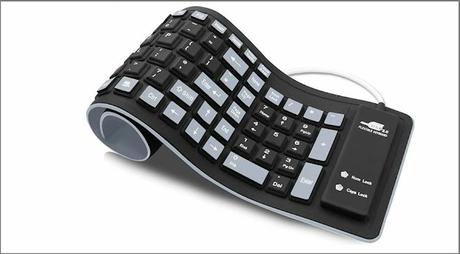
flexible
And what’s more I had no idea what they were for. So I started with:F1 – Opens the Help screen for almost every program.F2 – Allows you to rename a selected file or folder.
F3 – Opens a search feature for an application that is active at the moment.
F4 – Alt + F4 closes the active window.
F5 – Allows you to refresh or reload the page or document window.
F6 – Moves the cursor to the address bar in most Internet browsers.
F7 – Used to spell check and grammar check a document in Microsoft Apps (e.g. Word).
F8 – Used to access the boot menu in Windows when turning on the computer.
F9 – Refreshes a document in Microsoft Word and sends and receives emails in Outlook.
F10 – Activates the menu bar of an open application. Shift + F10 is the same as right clicking.
F11 – Enters and exits full screen mode in Internet browsers.
F12 – Opens the Save As dialog box in Microsoft Word.I’ve highlighted F7 as it was the only one that I might possibly use in the future. The rest of them are still a mystery to me.There are four keys on the majority of modern keyboards that are a legacy from the ancient times of computers and, to my surprise, are useless.

inflexible
System Request is often abbreviated SysRq or Sys Req. The origin of this key dates back to 1980, when IBM computers typically ran few operating systems. System Request was designed to switch between them. Since then, the key has no purpose. Today it is rarely used in software testing and programming on Windows system.Print Screen (usually placed in conjunction with System Request), often abbreviated PrtScr or PrntScrn. It's original purpose was to capture the screen and print it on paper. Today it's used to capture the screen and save it to clipboard.Pause/Break key has its predecessor in 19th century telegraph, where electrical circuit had to break in certain moment. Today, the key has no real meaning and it's used in keyboard shortcuts and few games. Pause functionality works in terminal environments to pause the execution of command or program, but is rarely used almost exclusively by programmers.Scroll Lock (abbreviated ScrLk) is the fourth of rather useless keys on modern keyboards, it never really had any particular function. It supposed to lock page scrolling with arrow keys, but since its introduction it never worked that way.In reading about the interesting, facts above I came across a person who had ordered a 1,200 page, two volume book chronicling the history of keyboards with also a bonus pamphlet about the history of the return and enter keys.
dogmatic
I can’t find any decent poems about keyboards and I haven’t written any. I’ll try a haiku:doors opennotes from a keyboard
sound like rain
Thanks for reading, Terry Q.
Email ThisBlogThis!Share to TwitterShare to Facebook
